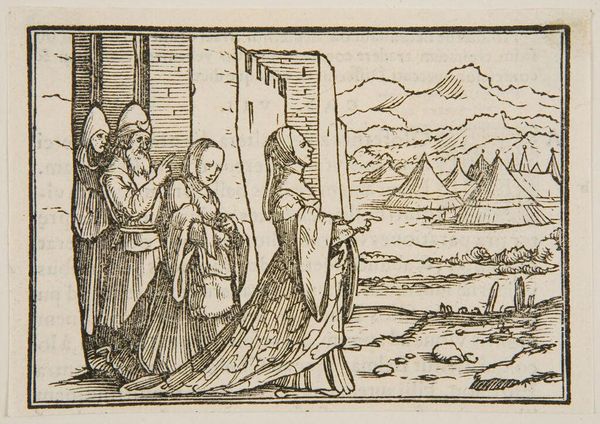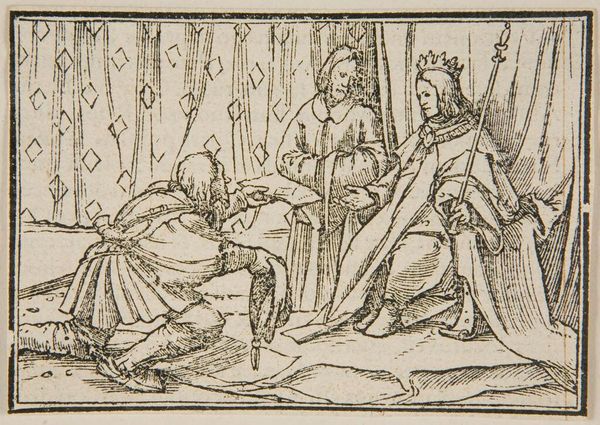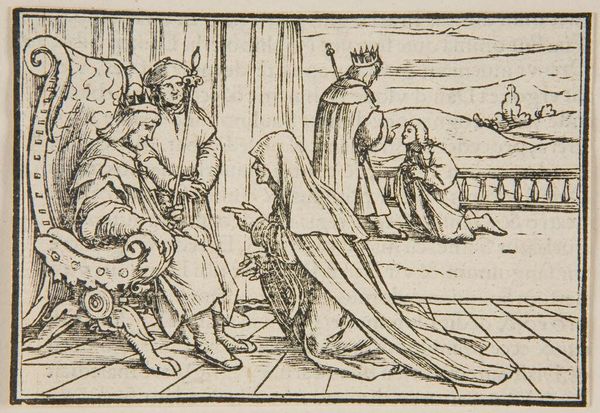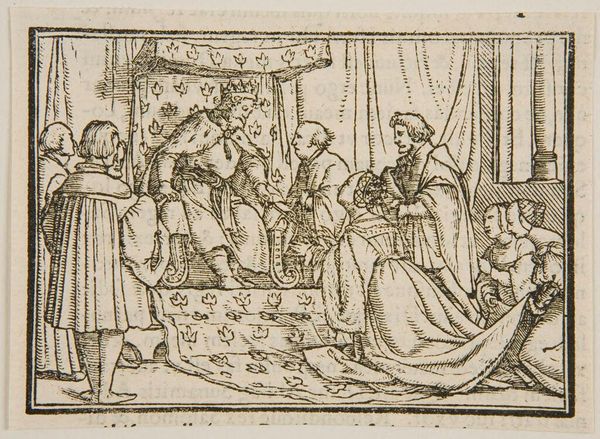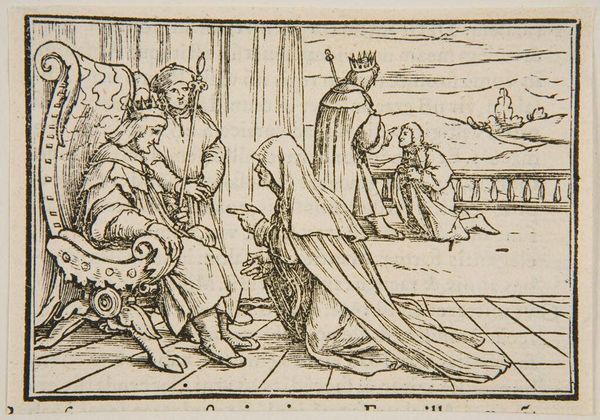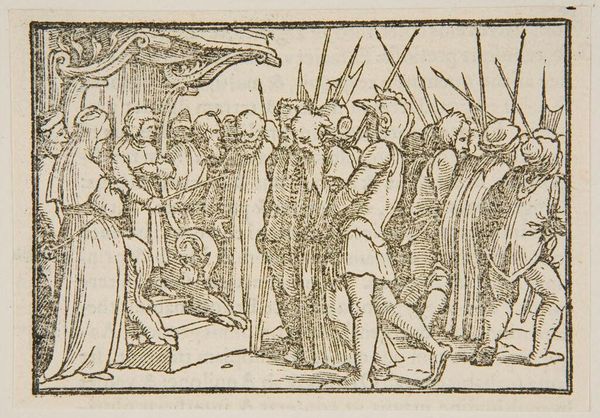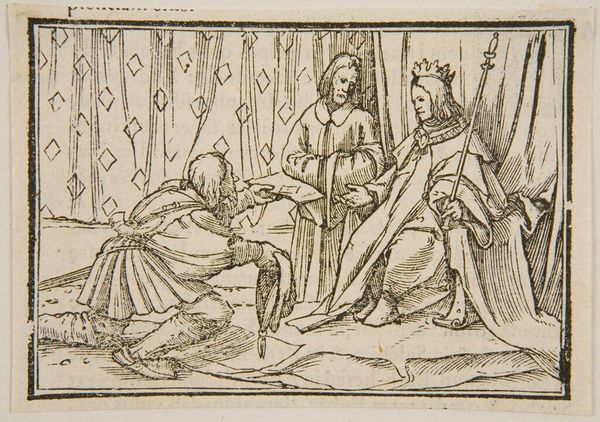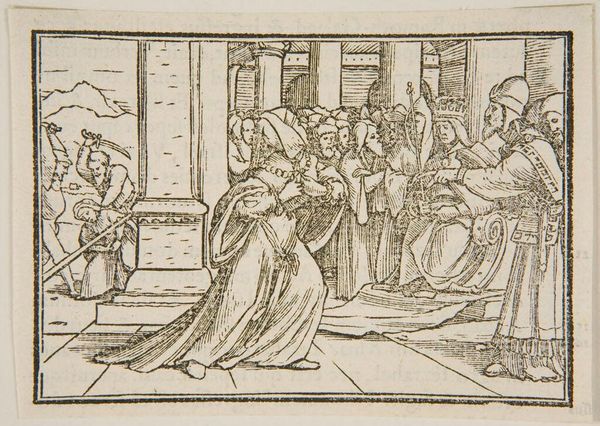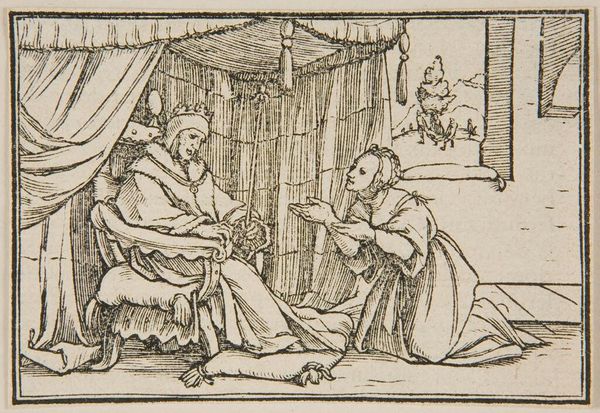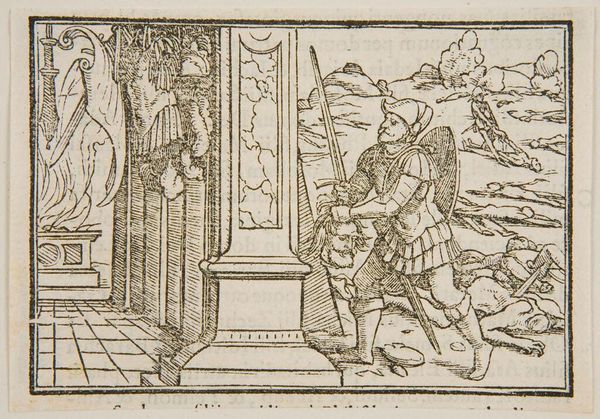
Copyright: CC0 1.0
Curator: This is Hans Holbein the Younger's "Judith XIII," a woodcut depicting Judith's triumph. The story is inherently intersectional, touching on themes of power, gender, and religious conflict. Editor: It's striking. The stark lines carve out this tense scene of beheading, and the patterned dress contrasts with the limp figure of Holofernes. Curator: Absolutely. Judith's act of resistance against oppression resonates throughout history, and the artwork invites us to consider how individuals can challenge dominant power structures. How do we frame the production and reproduction of gendered violence across history? Editor: Woodcut as a medium is interesting here, too. It democratizes the image through reproducibility, and the labor involved in carving the block mirrors Judith's calculated, physical act. Curator: Precisely. It speaks to the accessibility of the message and the tangible effort of resistance. Holbein challenges traditional representations of women as passive figures by highlighting Judith’s agency. Editor: For me, the impact lies in that tension between the clean lines and the grisly subject matter. It makes you confront the physicality of the event. Curator: A powerful reminder of the complexities inherent in acts of resistance and the ongoing need to question established norms. Editor: Indeed, it pushes us to examine both the surface and the deeper implications of such an act.
Comments
No comments
Be the first to comment and join the conversation on the ultimate creative platform.
